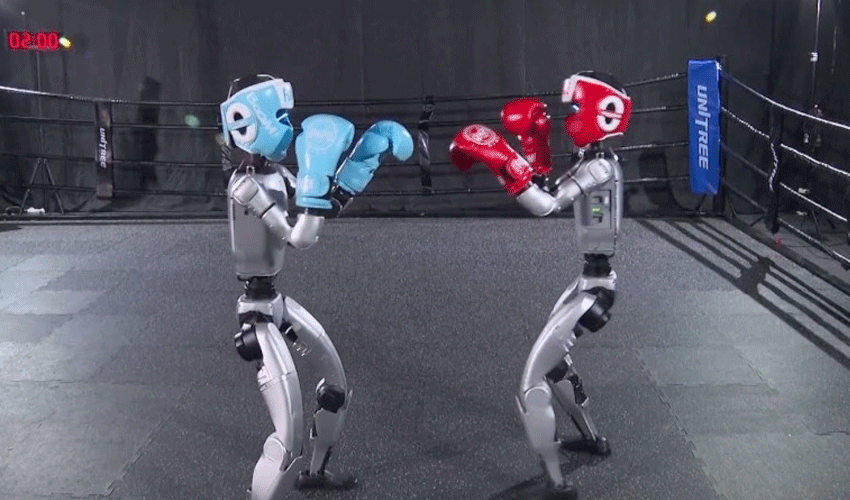First-ever humanoid robot fight shocks crowd

In a world-first, humanoid robots traded quick punches and kicks in a live combat sporting event conducted in Hangzhou, eastern China, on Sunday – a major turning point in robotics and competitive sports.
Comprising machines created by Hangzhou-based technology company Unitree Robotics, the event—part of the China Media Group (CMG) World Robot Contest—took place at the Olympic Sports Center.
Dubbed the “Mech Combat Arena Competition,” the contest aired internationally and featured exhibition and competitive fights among the advanced humanoid warriors.
Organizers said that the competing robots have modern motion control systems that let them perform intricate martial arts moves including sidekicks, straight punches, and hooks. A challenge to the boundaries of robotic balance and reaction time, the machines were also able to quickly regain posture after falling.
Unitree Robotics’ marketing manager, Sun Baoyan, said performing a fast leg swing needed rapid motor control and sensory processing. The motion control algorithm has to coordinate the joints in milliseconds and process data from internal sensors in real-time. Regarding endurance and stability, this is quite tough, she noted.
Particularly in assuring stability, controlling heat dissipation, and extending battery life, developers pointed out that building humanoid robots for high-impact clashes also presents major engineering difficulties.
“We have had to optimise a large set of motion control algorithms especially for fighting moves,” said board member of Unitree Robotics Wang Qixin. “Anti-fall capacity, for instance, required intense development to ensure the robot could perform effectively in competitive conditions.”
China’s fast developments in artificial intelligence and robotics are highlighted by all technologies employed in the robots, including hardware components and software systems, being locally produced.
CMG brought creative broadcasting methods including AR, VR, and free-view camera systems to augment the live competition. The main technical director of the event, Jiang Hua, said the aim was to make every robot seem lifelike and interesting on livestreams. “We have created engaging graphics and stylized camera angles to improve the audience experience. This is a visual and technological exhibition, not only a battle, he remarked.
As much an educational experience as a spectacle of futuristic sport, the event also included experienced commentators and analysts who could provide live breakdowns of the robots’ mechanics and approach.